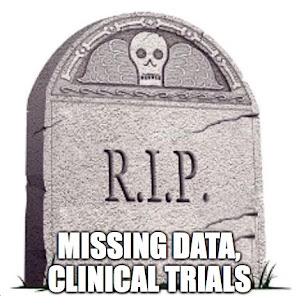Take a Chill Pill
The statistics on sanity are that one out of every four Americans is suffering from some form of mental illness. Think of your three best friends. If they’re okay, then it’s you.
- Rita Mae Brown
Are you balding? Get treated for alopecia. Thin eyelashes? You may have hypotrichosis. 50+ male with a reduced sex drive and erection troubles? Andropause could be the cause. If you are a woman with inadequate breast development, it’s really a disease, according to the American Society of Plastic and Reconstructive Surgeons. An issue of the Seattle Times quoted that 75% of the adult US population was diseased. Are we increasingly becoming biologically indisposed? Or is something else at work?
Medicalization is a social process through which previously non-medical conditions are turned into ‘medical problems’primarily by selling the idea that a complex personal issue is a molecular disease. Years ago, some children were deemed as problematic and unruly, but families were expected to deal with them. Men who were balding just wore hats to hide their heads. Obese individuals exercised more, ate less, or laughed on their own grossness. Infertile couples adopted children. And that was that. Nevertheless, since an increase in medicalization, all these states are attributed to a type of disease that can be treated or “cured.”Not infrequently, it sells to healthy people the idea that they are sick, making ‘disease mongering’ a more appropriate term.
So why is medicalization, or over-medicalization as some experts would rectify, a problem? If treatments offer relief from an “affliction,” what’s wrong with that? Disppointment with one’s sex drive isn’t a nonproblem. And who wouldn’t be happy with leaner bodies and attentive children? The drawbacks, I believe, are the following:
Firstly, when we medicalize everyday life and promote idealistic models of personhood, we pay a cultural cost. As with size-zero models or girls with age-defying looks, when we invent seductive new norms of bodies or behaviours, we risk making perfectly normal people feel inadequate. We disregard their individuality. Michelangelo was labelled autistic for rarely speaking with others, walking away mid-conversation, skipping his brother’s funeral, and scarcely ever bathing. And yet, it was this uncured autism that brought out his genius in works like David or Pietà. Michael Phelps was medicated for ADHD but it was water that soothed his hyperactivity and made him the most decorated Olympian of all times. Examples abound.
Secondly, many possible benefits of medicalization come at a cost. Bariatric surgery leads to not only a biological alteration of your intestines, but also ulcers, hernias and more. With aggressive disease awareness campaigns, even doctors who didn’t take certain conditions seriously earlier, have started offering pills to treat them. Why don’t andrologists offers a sensate focus therapy, for example, before an erection pill? Medicalization has several other costs, such as use of approved drugs for recreational or off-label uses. Viagra was initially approved for male impotence. But in the US, there are also commercials advertising the blue pill to men to improve their sexual functioning.
Thirdly, medicalization plays on our perceptions by reanimating common conditions with a pill. Sleeplessness had been around through the ages, regarded as a normal consequence of daily life, until from the nineteenth century onwards, it became ‘insomnia.’ Since then, around a tenth of people in the UK have been taking sleeping tablets 3 or more times a week. By linking small breasts with a lack of self-perceived femininity, drug makers have successfully medicalized beauty. In 2004, about 260,000 women received breast augmentation for cosmetic purposes alone, and around 60,000 got implants after undergoing a mastectomy.
Unbeknownst to most consumers, these cookie-cutter moulds of personhood are being quietly engineered by a $600 billion pharmaceutical industry. With media in tow. Up until the 1980s, erectile dysfunction used to be quoted at barely 2%. But within a decade, estimates were as high as 50% for men aged 40-70. Interestingly, in 1996, Viagra was licensed for use in the US, and Pfizer had launched a $90 million advertising campaign. This was a brilliant example of pharmaceuticalisation of human conditions by turning them into opportunities for drug intervention.
Sexual dysfunctions are a natural degradation for humans, just like ageing and dying. The problem with medicalization is that no matter how healthy we are for our age and species, it makes us feel limited, and in need of constant improvement, much like the consistent software upgrades on our computers. Whether a condition needs to be treated often depends on whether its drug is substantially improving our life or amplifying the problem by drumming fear or discontent into us. We need to ask ourselves if a problem is really a physical one, or more of percerption. These are hugely complex issues.
The question, therefore, is: since we have the scientific capabilities to improve human functioning in this manner, should we use this knowledge? In a compelling #FictionFollowsFact manner, biotechnologist Shubhra Sen debates such issues in The Aquila Trials.
#medicalthriller #faction #pharmafiction #TheAquilaTrials #Indianauthor #latestnovel #book #FictionFollowsFacts #medicalization #pharmaceuticalization




Comments
Post a Comment